#subtractive synthesis
Explore tagged Tumblr posts
Video
youtube
NASA ARP
A stochastic experiment with two ARP 2600s.
The ARP synthesiser was invented by Alan Robert Pearlman, a NASA engineer, in 1969.
The ARP 2500 was used in the 5 notes sequence of the film Close Encounters of the Third Kind, played by Phil Dodds, of ARP.
https://on.soundcloud.com/DyHXt
#youtube#electronicmusic#synthesizer#modular synthesis#subtractive synthesis#additive synthesis#modular synthesiser#arp2600#nasa#space#ambient music#ambient#ethereal#eerie#soundscape#science fiction#scifi#close encounters of the third kind
2 notes
·
View notes
Text

Korg Poly 800.
#korg#poly 800#synthesizer#hybrid synth#subtractive synthesis#polyphonic#korg synths#80s#advert#vintage advertisement#80s synth#original post#polysynth
3 notes
·
View notes
Text
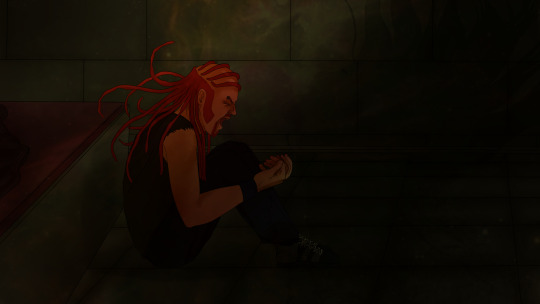

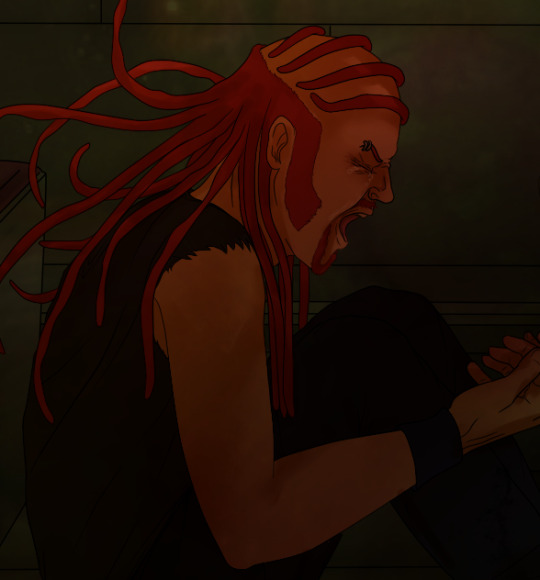
Artwork finished for the story Nightmares Run Wild. (Had to draw this to get some tension out of my system)
>>next<< The story of (almost) losing a best friend (but being just as traumatic) was heavily inspired by pausing the movie's end, way too many times. So here's a quick summary under the cut for those who need it:


He was left behind, frozen. It only lasted a few moments in the movie, but they've made so many scenes of Pickles still not moving from Nathan's side after minutes long, maybe an hour too of dragging his body across the snowy terrain.


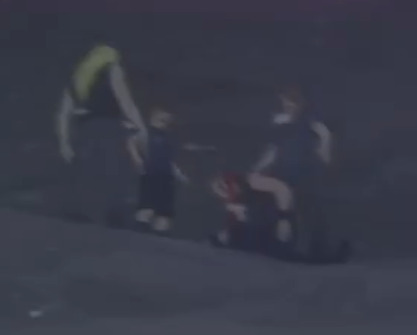

Pickles lost his instinct to cover his head from a lightning bolt.

Then his eyes, when he finally saw Nathan live.

Someone give this man a break.
#metalocalypse#mtl#dethklok#mtl fanart#metalocalypse fanart#dethklok fanart#pickles the drummer#nathan explosion#in the background of the painting a star is dying#since I've made the two galaxies merging together concept a nebulea collapsing after losing a huge chunk of itself looked only logical here#nickles#kind of?#post aotd#mtl aotd#I used a bit of color theory here for fun. when you look at the rgb additive color synthesis diagram#you can notice that when you subtract blue you get green. yellow. and red. this was made bc Nathan's color is blue#mtl artwork
110 notes
·
View notes
Text
youtube
How to learn any synthesizer
2 notes
·
View notes
Text
How to think about subtractive synthesis
Subtractive synthesis is one of the most common and versatile methods of creating sounds with electronic instruments. It is based on the idea of starting with a rich and complex sound source, such as a waveform or a noise generator, and then SUBTRACTING!
Subtractive synthesis is one of the most common and versatile methods of creating sounds with electronic instruments. It is based on the idea of starting with a rich and complex sound source, such as a waveform or a noise generator, and then filtering out or subtracting the frequencies that you don’t want, leaving only the ones that you do. This way, you can shape and sculpt the sound to your…
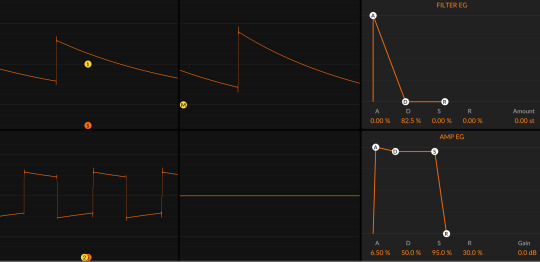
View On WordPress
#beatsmith#electronic music#music#music production#producer#sound design#subtractive#synth#synthesis
0 notes
Text

My next art was supposed to be something else, but I made a Ghoul oc instead, whoops!
So here’s Prism! They are a Multighoul of all five elements, and I made them following the opposite idea of Swiss. Swiss was based around the idea of Subtractive color synthesis (mix all colors and you get black), while Prism was made on the idea of Additive color synthesis (layer all colors and you get white).
All of their features are indicative of the different elements, and I’ll go over it all if anyone is curious (PLEASE BE CURIOUS, PLEASE SEND ASKS, I WANNA YAP).
#the band ghost#nameless ghouls#nameless ghoul oc#ghoul oc#the band ghost oc#prism ghoul#art#my art#my oc art
680 notes
·
View notes
Text

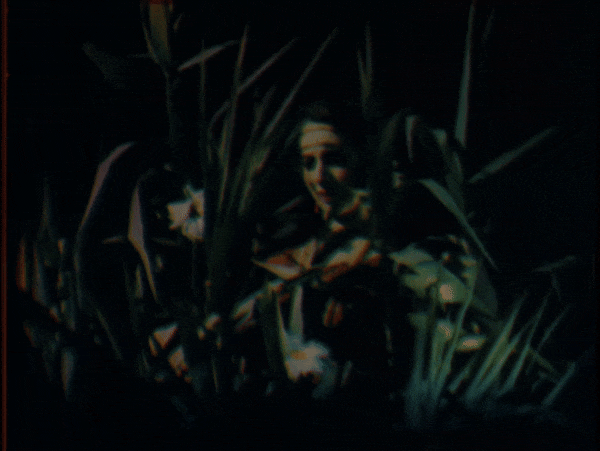
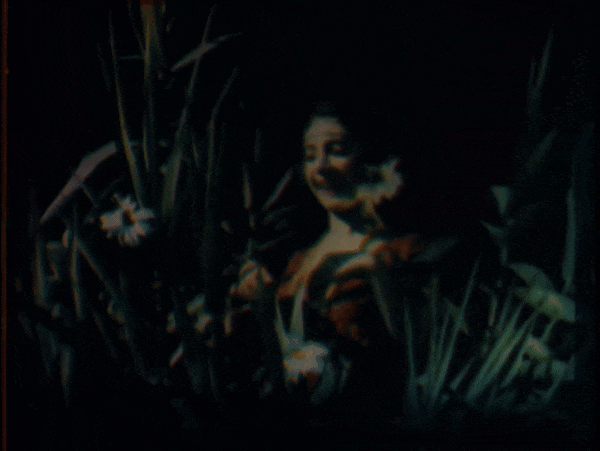


Study of Light / Étude de la lumière (1923)
[letterboxd | imdb | HENRI]
Director: Maurice Audibert
Study of Light is a short showcase for Maurice Audibert’s method of natural color photography—a process of tri-color additive synthesis—which he developed and refined with Rodolphe Berton starting around 1909. The process involved using multiple lenses and prisms to capture three photograms per frame of film, arranged in a triangle printed within each frame on 65mm film. [see what that looks like at Timeline of Historical Film Colors] Then, using color filters during projection, the three photograms would be synthesized into a single color image.
This, of course, required specialized projection equipment, which Audibert would address in further refinements in his technique. (If you’ve ever looked into the development of color and sound film technologies before they became habitually adopted, you know that extra work/expense for exhibitors was a typical hurdle for inventors.) Audibert himself recognised some of the issues with his process, including colors shifting due to imperfect superimposition and a stereoscopic look to the projected images due to variation in the depths of field for the superimposed images. As a 2020s viewer, I find the dreamy, gossamery look visually interesting, though I recognise that that wasn’t what Audibert was aiming for!
All that said, Audibert transitioned to experimenting with a subtractive rather than an additive process in the year following the production of this film.
#1920s#1923#Maurice Audibert#silent cinema#my gifs#film#cinema#film history#cinematography#french cinema#silent film#silent movies#silent era#classic cinema#classic film#classic movies#filmblr#film technology
78 notes
·
View notes
Note
where should i look to learn the basic of ableton? it overwhelms me so much but there's nothing more i want to do than making music or at least trying to and I'm terrible depressed bc of that
Hi anon. I’ve been in the same position as you and I know what it feels like to have all this creative energy and emotions pent up that you can’t express in the way you’d like to. This is a long one but I’m really passionate about this so here:
Basically I learnt the basics of logic at my uni and I got lessons/mentoring from my bandmate who encouraged me to switch over to ableton (I much prefer it now).
I know it looks overwhelming at first but I promise with some practice it’s really not too bad (it’s def easier than pro tools lol) Music production is one skill that is really easy to self teach because there’s just so many free resources online. I’d really recommend finding an in depth introduction to ableton video on YouTube and kind of just following along. Start trying to learn the keyboard commands early on if you can because they’ll make your workflow so much faster in the long run.
Izotope has some really great articles that go into the basics of production techniques in really easy to understand terms. Sound on sound has some great articles too. Making a big google doc with every you learn can be a great resource to have so you can go back and reference it.
Alongside that I’d recommend trying to learn some basic music theory because I honestly think it essential to know for production (many people would disagree lol). If you haven’t already, try to get your head around the circle of fifths and the harmonic series.
As well as this, I think it’s important to understand the basics of synthesis because that terminology will keep coming up in VSTs and it’ll help to have some context of where these terms came from. Look into the basics anatomy of a subtractive synthesiser to start. From there id recommend looking into FM, additive and wavetable synthesis. This book was written in the 80s but I found it really helpful for grasping these concepts: https://archive.org/details/SynthesizerBasicsDeanFriedman600dpi_201608/page/n70/mode/1up
I’d also recommend grasping the basics of EQ and compression because it’s something you’ll probably use on every single track you ever make. Also learn what phase cancellation is because that’s an issue that come up a lot when you’re a beginner.
If you’re able to, I’d recommend making it a goal to try to a learn new thing about music or production every day. Even if that’s just something as simple as what synth was used on a song you like or what a particular mic is good for or a neat trick you do with a stock plugin, all that knowledge adds up and complements each other.
I’ve found that trying to listen to your favourite music with an analytical frame of mind and even trying to get a hold of the multitracks can be a great learning tool. Find out what kind of hardware they used, what plugins they used, what mics etc. There’s no shame in copying your favourite producers until you find your own voice.
In terms of gear, I’d recommend picking up a midi keyboard and an interface if you don’t have one already. If you’re finding you keep running into CPU issues with your computer (ableton isn’t great for this) you can try resampling your midi track and turning off the plugins then freezing the track (I wish I started doing this sooner). Otherwise you’ll just get frustrated and stuck and not want to keep working on your tracks.
If money is an issue, ableton comes with a lot of great stock instruments and effects + samples and drum racks but expensive plugins are always going on sale so maybe have a look on plugin boutique and see if anything that looks cool is within your budget.
Keep in mind that I’m saying this as someone who still considers themself a beginner/intermediate in this area and I still have a heap to learn too. Good luck and make cool stuff.
18 notes
·
View notes
Text
Synthesizer Nostalgia
Recently...
NAMM (the National Association of Musician Merchants) happened. It's a trade show for instruments that gets all sorts of YouTube coverage, particularly by channels interested in synthesizers.
This year something that I think is very very cool was shown... The Behringer BX1

This thing is amazing!
It's a recreation of Yamaha's 1983 DX1 instrument, which is legendary.
For starters it was the first FM Synthesizer, the first (I think) form of digital synthesis. The DX1 was also a beast, it effectively stacked two powerful synths on top of each other, allowing for layered, more complex sounds. A feature that didn't become standard until the '90s. It also had a key bed with polyphonic aftertouch, a feature not event standard today! (but we are starting to see more instruments with it in the last few years) Oh, and it was $14k ($45k adjusted for inflation).
Yamaha put out an excellent video about it if you want to hear it/know more:
youtube
Another notable thing about the DX1: only 140 were ever made.
The Sound of the '80s
Okay so the DX1 was kind of unobtainable, but its smaller (relatively) brother the DX7 was not. While it didn't have any of those rad features I mentioned, and was wildly difficult to program, the DX7 was still a first wave FM synth. It could do all sorts of things synths couldn't do before.
This became...a very big deal. It basically defined the music of an entire decade:
youtube
But There's More!
Did I say the Behringer BX1 was a clone of the Yamaha DX1? Well it's not just that. It's actually more than that!
See, the one big downside of digital synths is they tend to sound...cold. It's hard to describe, but their predecessors, analog synths, have a much warmer sound. I don't want to dwell on this because it's a lot but one way manufacturers can make a digital synth sound warmer is by using some analog components in it, particularly the filter.
Behringer knows this and decided to make their BX1 with analog filters, and not just any old analog filters, but the chips Yamaha used on their other legendary/expensive/small production synth: the CS80:
youtube
The instrument that scored Blade Runner.
Wait...Isn't This An RPG Blog?
Well that's just it, when I saw/read about/heard this thing I got the same feeling I had when I saw the Dolmenwood kickstarter.

Retro TTRPG people and retro synth people have a similar need. They both want to harken back to a distant time (the 70s/80s) and to tinker with the devices that produced these feelings.
One uses dice and mechanics to experience a kind of gameplay. The other uses filters and DCOs to experience a kind of music.
WotC becomes Roland Necrotic Gnome becomes Dreadbox B/X (as a system) becomes FM Synthesis The Moldvay Box Set becomes the DX7 Suddenly the Volca FM is an OSR darling retro clone.
okay so maybe it would make more sense to compare B/X to an analogue subtractive synthesis method instead of a digital additive one, but whatever
Dolmenwood is a recreation of an excellent old system with a lot of new features and ideas. The Behringer BX1 is a recreation of an excellent old synth with a lot of new features and ideas.
Bringing Back The Old School

These days the OSR is not only releasing new modules/systems/supplements, but importantly, its making them more accessible than ever.
OSE is a perfect example. It's a rewrite, but what a rewrite! It is so much easier to learn B/X with OSE than with the original books. Similarly, most (though certainly not all) classic modules don't hold a candle to the adventures coming out right now.

Accessibility is a big thing in the synth community as well.
Although in matters of pricing...we are talking about electronic instruments vs books, so bear that in mind.
An original DX1 goes for over $150k, but that BX1 clone? Probably going to cost $1,200. Behringer is also known for its Deepmind 12 synth, a $800 (sort of) clone of the '80s analog powerhouse known as the Juno 106.
youtube
Important to point out that many people go the virtual route for their classic synth clones as well. Software can (pretty accurately) emulate almost any vintage synth (and certainly any digital one). These can cost over $100 but that's still a total bargain.
Plus, you're looking at way more features on these modern units, not to mention software programmers. Creating sounds on these modern devices is way easier than their vintage counterparts...kind of like how OSE is way easier to grok than B/X.
Also, like the OSR, there isn't only one company making retro clone synths. Many companies (even the WotC equivalents) are making little retro affordable instruments. Others are taking old ideas and using them to inspire new products. Again, not unlike the OSR, NSR, or indie ttrpg sphere in general.
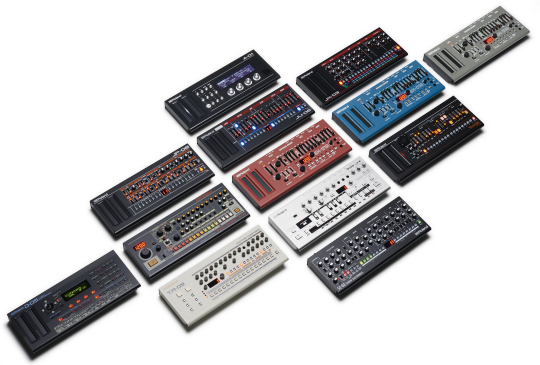
From both the OSR and the synth community the thing I always hear is: "this is the best time to be part of this hobby" and I think that's just great!
More Alike Than We'd Like
Worth noting as well that just like the RPG community, the synth community has drama.
Behringer particularly has come under scrutiny for creating clones of modern devices produced by other companies. While I don't feel informed enough on the situation to speak on it, there are been just as many YouTube videos and blog posts on the topic as any OSR kerfuffle.


The Future/The Past
Maybe I'm just a nostalgic kinda guy but I'm so excited to get my hands on more vintage inspired synths and more vintage inspired games. They can teach us that old ideas still have value and can benefit from modernization.
But before I do any of that...I think I have a line on a cheap Laserdisc player and some giant disk copies of the first two Bill & Ted movies...
21 notes
·
View notes
Text
Introduction to Shäharah - The Tree of Eternity
There are many takes on the fact that Kabbalah is a closed tradition and that other traditions cannot borrow off of that or that people who are not Jewish cannot practice it. And I agree, IF interpreting Kabbalah strictly using Jewish mythology and cosmology is true. However, take a look at the image below.

If you look closely at the different variants of the tree, especially the tree of meditation, you'll notice that it is strikingly similar to the chakra system or the inverted tree resembling the norse tree Yggdrasil. This is all to say that mystics of various different traditions have had a long history of borrowing from each other, with what resonates the most deeply with them. This means that the chakras of Hindu and Buddhist traditions, Sefirot of jewish traditions and Latifa of Sufi traditions, all are different expressive maps of the same thing.
Similar to all of these mystical and magical traditions, shäharah is also one such tradition. Shäharah follows a synthesis of the above mentioned traditions as well as other esoteric traditions like Taoism and extinct ancient religions like Greek and Egyptian polytheism. Shäharah means "the path of the crescent moon", with the moon a metaphor for the inner alchemical process, the bearer of the nectar of immortality, mystical, magical and material powers. The Shäharah has two versions of its tree which we call the expanded and the collapsed tree.
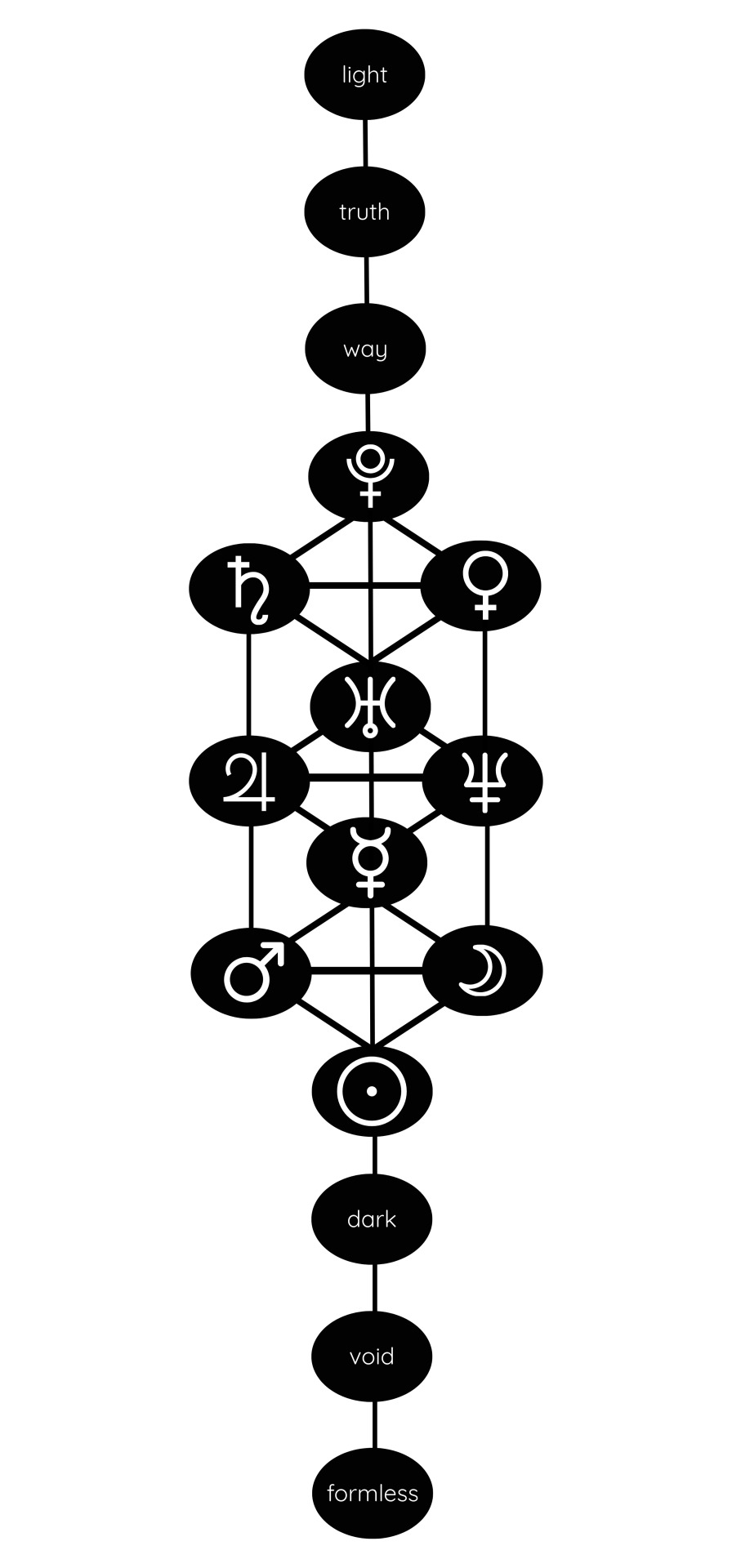
The collapsed version is the one below. The reason I showed both is because the collapsed one contains within it all the upper and lower spheres resembling diagram (h) the tree of perfection containing within it 16 goddesses, each representing a phase of the moon [starting from 1 at the bottom and moving to 16 at the top of the expanded tree] and the sovereign of a sphere, resembling the diagram (d) beauty as bearer of all powers [notice the 16 pointed star], additionally this tree corresponds to the one chakra each which are visualised as different fae courts ruled by a Jın king, in a 16 chakra system with 10 major chakras and 6 minor chakras [they're really important, its just a way to classify them] , like the diagram (e) tree of meditation.
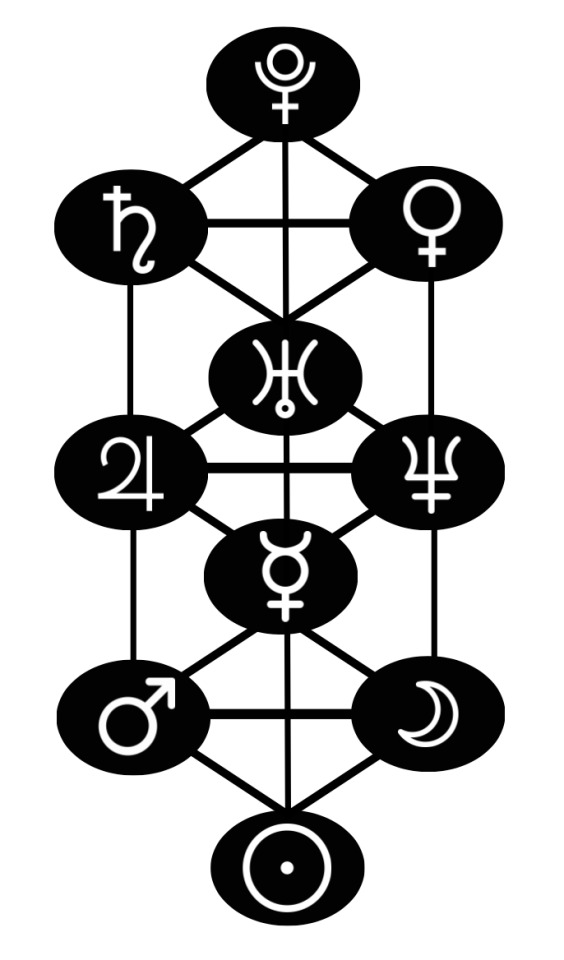
Chakras:
From the bottom to the top we have:
Summer court : Naemah : Muladhara Chakra : Müdhab
Winter court : Nurun : Svādhiṣṭhāna chakra : Müraħ
Autumn court : Sekem : Maṇipūra chakra : Khäħmar
Spring court : Kodeshah : Ananhata chakra : Borkhan
Midnight court : Alilat : Hṛdaya chakra : Jäħim
Day court : Freia : Viśuddha chakra : Hourash
Dusk court : Rüðah : Lalana chakra : Zaitun
Twilight court : Istar : Ājñā chakra : Zäħrah
Night court : Sämash : Bindu chakra : Zuhal
Dawn court : Dähra : Sahasrāra chakra : Shaitan
Light - Winter to Autumn - Al'Baran - Bhögaħ - Linga Chakra
Truth - Day to Midnight - Al'Dhira - Södäshi - Kantha Chakra
Way - Twilight to Dusk - Al'Tämüz - Shakhinah - Talu chakra
Dark - Night to Twilight - Al'Sanah - Bhäirai - Lalata chakra
Void - Night and Dusk - Al'Rath - Kali - Golata chakra
Formless - Dawn to All - Al'Ruah - Mah - Guru Chakra
The six minor chakras represent lines from each of the courts. Every court has three mansions of the moon, i.e three lines connecting a court to one other court. For eg: if you see the diagram below, sun connects to mars, mercury and moon. However, sometimes the connections repeat. eg: mars -> moon, mercury, jupiter and moon -> mars, mercury, neptune. You'll notice that one connection repeats, so one of those houses are classified as a greater house, a house containing a Khoreh. If we subtract the number of greater houses from the number of mansions of the moon (28), we get 22, the number of lines within the tree, so 28 houses, each ruled by a Raza.
If you trace a line across the chakras in the location of the planets of the courts, you'll notice a zig-zag pattern which when interpreted from top to bottom represents the thunderbolt and from bottom to top represents kundalini rising.
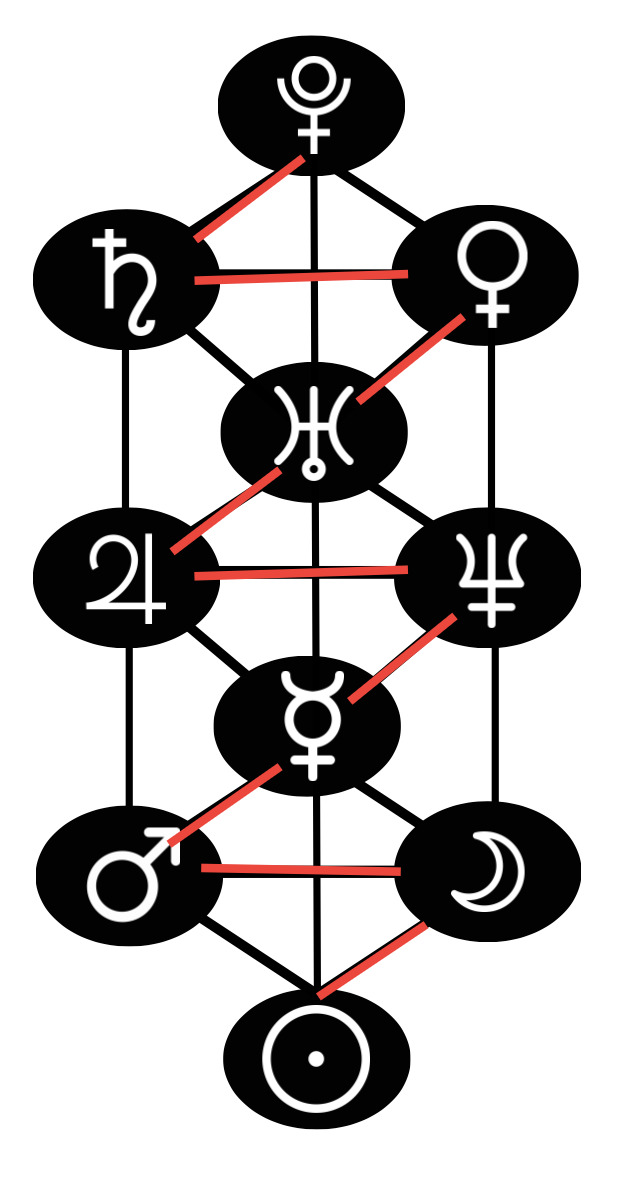
Now you'll notice that in the tree diagrams that I avoided mentioning, diagram (f), (i), (g) has a sphere at the bottom like in the popular Kabbalistic tree of life. This sphere has the symbol
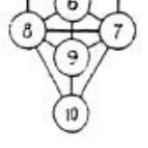

However, in our system, every one of the spheres and the greater houses contain within them the four divisions, each quadrant an element: north - air | south - earth | east - water | west - fire. Each of these quadrants is both a location and contains a Ðakın, an animal spirit, ruling it associated with the hexagrams of the goddesses.
Each of the hexagrams contain two trigrams stacked on top of each other, so a total of eight trigrams. Each of the trigrams are represented by an angel (Osüraħ), the sphere of pluto does not contain the angels, because it isn't really a sphere but the union of all, so they are the arch angels (Süraħ). So (8 x 9) gives us the 72 angels i.e the 72 guardians of the directions i.e diagram (a), the tree as sunflower. Think of each of the Osüraħ as guardians of the directions of each sphere.
Now all of this is just the waxing phase of the moon, we also have the waning phase, which you can interpret as the calm and fierce aspects of each of the divinities represented. In the Kabbalah, this would be equivalent to the sephirotic tree and the qliphotic tree. Furthermore, we haven't explored the houses i.e mansions of the moon and their architecture which we will do so in a later instalment. For now I would recommend starting with whichever goddess or Jın king calls to you. Remember that the entities of the tree manifest themselves depending on one's karma, you are exploring your inner cosmos, constructing your mandala, so if none of these entities call to you but the map itself calls and you would like to put your own interpretation with your own entities, DO THAT!!
Here is the link to all of the entities which I will keep updating.
#tantra#witchblr#witchcraft#advwitchblr#grimoire#mysticism#alchemy#sorcery#witch#sorceress#sephiroth#kabbalah#chakras
8 notes
·
View notes
Text
youtube
The standard line about analog synths is that they let you "design your own sounds", which is theoretically true, but in practice it seems like most people use them to just make small variations on electronic sounds. But I want to use circuit elements to tinker with waveforms until I produce the timbre of a saxophone or something.
Which is why this video is pretty cool, this person set out to actually create a guitar strumming/plucking noises through subtractive synthesis, and really pulled it off.
15 notes
·
View notes
Audio
Fantasie, Fuge und Toccata in Japanischen Modi
An experiment, with transposing thirteen of Johann Sebastian Bach's Fantasias, Toccatas And Fugues, to the major and minor pentatonic modes of Japanese classical music.
Performed on the Oberheim OB-EZ 8 Voice synthesiser, a gift from GForce Software.
Please enjoy 1 hour and 47 minutes of Baroque Japanese tranquillity.
#classical music#japanese music#experimental music#johann sebastian bach#j s bach#bach#fantasia#toccata#fugue#toccata and fugue#electronic music#synthesizer#subtractive synthesis#additive synthesis#oberheim#oberheim 8 voice#ob-ez#gforce software#soundcloud
0 notes
Text
Understanding the Divinity in a Codex for True Understanding
Unlocking hidden truths through language, symbolism, and sacred operations
⸻
Since the dawn of written language, seekers have believed that the divine reveals itself not only through the heavens and nature—but also through code, or more specifically, codices: ancient books preserving sacred truths. But what if the very letters we use every day also carry hidden power? What if meaning isn’t just constructed by words, but encoded in each letter’s form, sequence, and structure?
This post explores the idea that the 26 letters of the alphabet are more than just symbols—they are sacred tools, each with meaning and placement governed by an unseen grammar of spirit. By applying an “order of operations”—inspired by mathematics—we can begin to uncover deeper truths in language and creation.
⸻
The Codex as Divine Container
A codex (plural: codices) is not just an old manuscript. It’s a symbol of preserved divine revelation. Whether the Dead Sea Scrolls, the Nag Hammadi library, or the Popol Vuh, codices often guard esoteric knowledge—hidden not to deceive, but to awaken the seeker.
In each case, words are written not just to inform, but to initiate. These are not manuals—they are mirrors of divine intention, meant to draw the reader inward, not just forward.
⸻
The Alphabet as a Divine Code
Let us consider that each of the 26 letters in the English alphabet corresponds to a vibration or archetype—a building block of creation. Much like Hebrew, Greek, or Sanskrit letters carry numerical, spiritual, and mystical meanings, English letters can be seen through the same sacred lens.
• A might represent beginning or activation. Either a part or apart. A piece
• M could suggest matter, memory, or matrix. Me, my mine Metatron princess of the present a closed and self absorbed view
• Z could symbolize completion or ending, integration, or eternity.
Letters are not passive—they interact, and placement matters. Like DNA, rearranging letters (or “genetic symbols”) in specific patterns produces meaning—sometimes healing, sometimes harm.
⸻
Spiritual Order of Operations in Language
Just as math follows an order of operations (PEMDAS), so too can language, particularly sacred or intentional language, follow symbolic operations:
• Plus (+) = Combine meanings to enhance or build truth
• Minus (–) = Remove illusions, falsities, or ego distortions
• Multiply (×3) = Expand meaning through repetition, resonance, or spiritual emphasis
• Divide (/) = Separate to discern clarity or refine insight
Using this, consider how you “operate” on a word like GRACE:
• G + R = Grounded Radiance
• Subtract E = Remove the ego from expression
• Multiply C threefold = Communication × Compassion × Clarity
• Divide A = Split awareness to explore duality (the self and the divine)
The result? A mystical unpacking of a seemingly simple word into a living principle.
⸻
From Words to Sentences: Constructing Divine Meaning
Take this symbolic practice further—apply operations at the sentence level.
“Let there be light.”
• Plus: Add context—“light” as knowledge, truth, clarity, or cosmic vibration
• Minus: Strip literalism; remove “there” as spatial, interpret it as internal
• Multiply by 3: Repeat the phrase in meditation to deepen resonance
• Divide: Split “light” into visible light, inner awareness, and divine spark
You don’t just read the sentence—you activate it.
⸻
Codices as the Blueprint of Sacred Creation
The holy books of many traditions—whether the Bible, the Qur’an, the Bhagavad Gita, or even the Emerald Tablet—are codices in the truest sense. Their structure, rhythm, repetition, and symbolic layering are not accidental. These texts are composed according to spiritual laws—which the reader can tap into through meditation, symbolic decoding, and intuitive synthesis.
Reading them with ordinary eyes offers history.
Reading them with sacred operations offers gnosis.
⸻
Conclusion: A Living Codex Within You
To truly understand the divinity in a codex is to recognize that language is not just descriptive—it is creative. The alphabet is a sacred library. Words are spells. Sentences are spiritual architectures. When we engage them with conscious intention—and a symbolic order of operations—we begin to awaken the living codex within.
We do not just read truth—we become it.
Try this: Take a meaningful word in your life today—like LOVE, TRUTH, or HOME. Apply the sacred order of operations to it. Journal what unfolds. You may discover a deeper version of the word you thought you knew
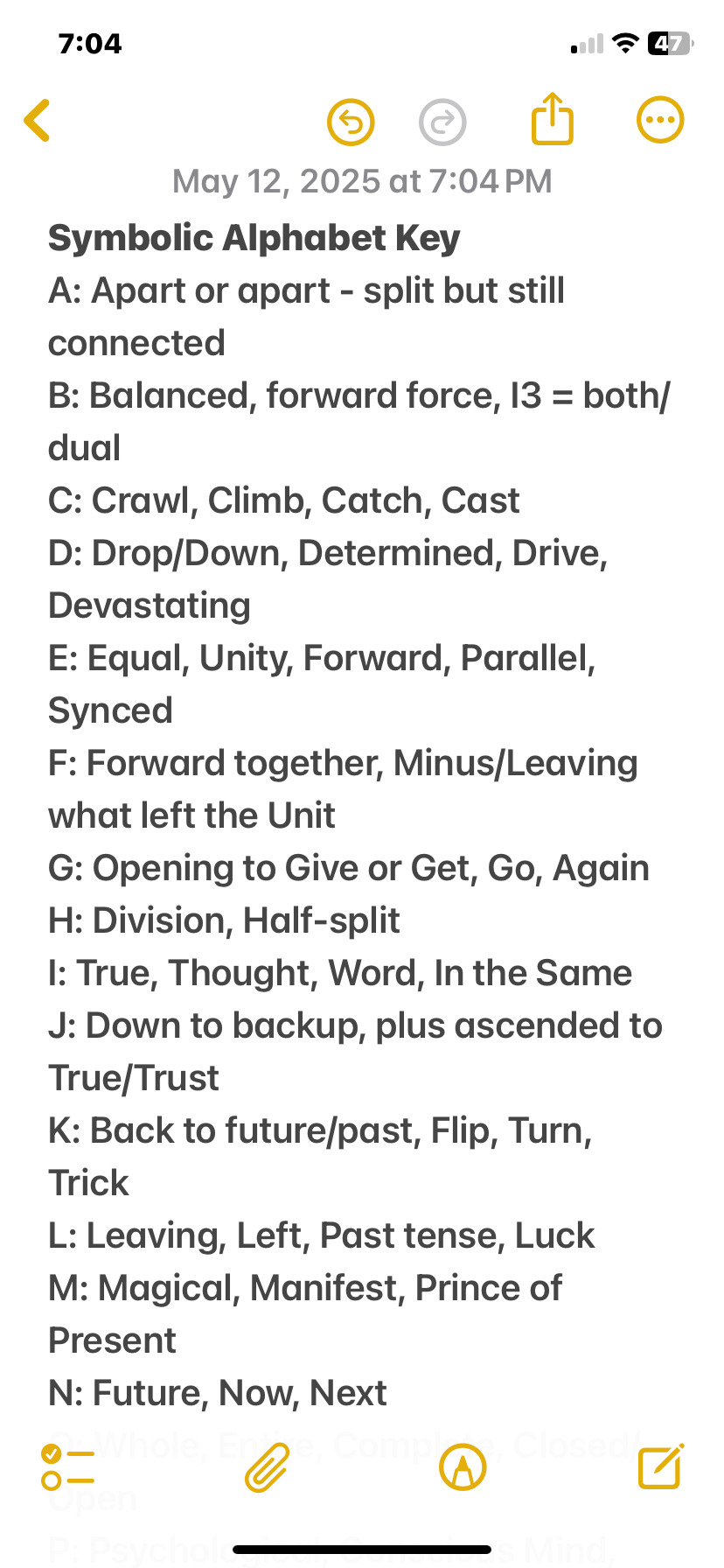




#wind and truth#truth will set you free#god the creator#trust god#faith in god#trust#courage#salvation#codex#codice#truth#gods truth#godsword#god loves you#time to repent
2 notes
·
View notes
Text
i did summaries for readings in one of my classes and found it helped me to read more closely. I'm currently reading birth of the clinic & decided to summarise some parts to make sure i remember them. i initially posted them to a private twitter account but that can't be indexed or searched and i wanted to have it searchable, so here it is.
please bear in mind that this is not the best of summaries, it's mostly for me. i have, however, tried to simplify the original text without losing its essence or complexity. one of the things i like about Foucault's writing is his care with the subtle nuances of processes, his level of attention to minute changes. i wanted to preserve that as far as possible but I also wanted this to be something i could read and understand quickly.
this is from pg 14 & pg 15 of birth of the clinic
the medical gaze is sensitive to the multiple equilibriums of the body; excesses in either direction indicate or are, essentially, disease.
the particularities of illnesses, which may vary subtly in their progression and presentation, intersect with the history of the patient.
"the individual patient finds himself at the point at which the result of this multiplication occurs."
to know the illness as a species one must remove the individual patient from the disease. but as zimmermann notes, the course of the disease can be interrupted or obstructed by the patient.
the individual is a negative element, which must be subtracted from the disease, but is also ineffaceably a part of the qualities of the disease...
"the patient is a geometrically impossible spatial synthesis, but for that very reason unique, central, and irreplaceable." (annemarie mol later iterates and explores this in the body multiple)
thus, medicine becomes engaged in a renewed attention to the individual...but ever more impatient attention.
instead, medical perception must be as a magnifying glass, which when applied to a part, makes one notice /other/ parts that could not otherwise be perceived... foucault's theoretical interest in sight-as-dominant recurs.
"thus initiating the endless task of understanding the individual"
so, the medical perception must re-render the individual salient.

briefly, understanding: he is tracing a progression here of the medical gaze, which is evolving alongside medicine. first the patient is a negative space in which the disease manifests (prior to that first of biomedicine, the patient is construed entirely differently) and the disease is the subject of priority, the positive species. then the patient's presence is renewed, and becomes a positive factor once more, but the complexity thus generated is unendurable and the patient must be routinized; hence the mention of Aesculpius and the snide attitude towards hospital practices that streamline patient care into broad categories that are presumed to function universally. this kills the capacity for observation by overwhelming the gaze with a multitude of things to observe. the task of understanding the patient within the ordering systems of the first and second spatialization must be undertaken microscopically, so to speak, by examining every part of the patient in the context of all the other parts, so that the examination of one can reveal the other, or reveal the others concealed to the naked gaze.
7 notes
·
View notes
Text
youtube
Intro to Synthesis Part 2, types of synthesis
#synthesis#synth#synthesizer#additive#subtractive#fm#modulation#phase#samplers#hybrid#amplifier#oscillator#dco#vco#vcf#vca#dcf#dca#resonance#amount#envelope#modulator#adsr#pitch#lfo#sync#tutorials#Youtube#ny#newyork
0 notes
Note
could be just me and my former biochem student haunting me but...
how do elements affect and define a ghoul's biology in your headcanon? due to being affected by all of them, do prism's horns and scales feel like diamond or really tough glass?
what about swiss maybe? do ghouls have genetics of sorts?
(sorry if this is overwhelming, im super curious about your ocs eek 👉👈)
I love the curiosity! Especially this question, cause it's so interesting to think about.
I'm not sure if its exactly genetics in the sense that we as human and other organisms of earth have genetics, as demons, and therefore ghouls, don't procreate or originate on the terrestrial plane. So, there really is no need for genetics. I usually refer to it as their elemental composition when I'm talking about the ghouls, and it's almost like how a molecule is built if I were to visually picture it, especially for Multighouls. Or, it's also like an alchemical elixir recipe, if I'm getting all classical about my references for the ghouls.
I guess in a way, you could view the features and characteristics of the element presentations as something like pseudo-genetics, as it mirrors the way we can have different features depending on our parents. But, it's really just the way the elements decide to "solidify" when the ghouls were originally summoned into a terrestrial form.
For each element, there are common features that are usually present in a ghouls appearance, like the hues of their skin or horns, but also things could be random and unnatural even for the ghouls. A few examples of this are Phantom's eyes being really dark for a Quint ghoul, or Cirrus's hair being dark and straight when Air ghouls often have light curly hair, as well as Aurora's sclera's being purple and her iris lacking a defined pupil. The elements heavily define the appearance in a ghoul, but its not the end all be all. Its purely how a ghouls elemental composition forms, stronger towards some features, not as much for others.
Now Multighouls are where it get fun. This is the part where elemental composition really gets funky. A multi ghoul features, depending on how many elements are composed of, have a much larger pool of features to pull from. So, for our dual element gals Aurora and Sunshine, their features are almost split down the middle for each of their elements, just their Quint and Fire features being the more noticeable or dominant ones. As a multighoul has more and more elements within their composition, its more common to see them have one major element, and then the others taking a back seat.
So for Prism, that was the case for their composition. They have the most Quint and Air features, not as much Fire and Earth, and then barely any for Water. And yes, their horns are diamond/crystal like. If I wear to actually try and execute them better, the horns would be reflecting and translucent in some parts.
Now, for Swiss. I don't think I've ever talked about Swiss's elemental composition to anyone. The way his composition manifested, it's actually really hard to tell what elements are dominant in his design (mainly because of his visual concept being what's called subtractive color synthesis). But his composition is Fire, then Earth, then Air, then Quint, and finally barely any Water. The hue of his skin and horns comes from Fire and Earth ghoul features, his ears are Fire, his eyes are a mixture of Fire and Quint, his hair texture is Air, but the color is Fire and Earth, and his multiple sharp teeth is a Water feature.
But yeah, that's how my ghouls' appearances work. :D
#the band ghost#nameless ghouls#nameless ghoul headcanons#swiss ghoul#prism ghoul#prism#my oc stuff#bonesy talks
29 notes
·
View notes